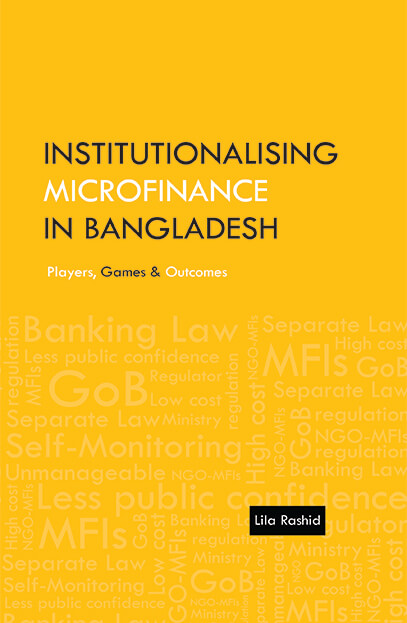- Shop
- Institutionalising Microfinance in Bangladesh: Players, Games & Outcomes
Institutionalising Microfinance in Bangladesh: Players, Games & Outcomes
https://uplbooks.com/shop/9789845062756-institutionalising-microfinance-in-bangladesh-players-games-outcomes-8390 https://uplbooks.com/web/image/product.template/8390/image_1920?unique=3d813f3
| Language: English |
Tags :
Book Info
The rural financial market of Bangladesh is now largely dominated by microfinance institutions and has changed dramatically in the last three decades. In 1983, the Bangladesh government provided regulatory support to Grameen Bank, the first microfinance bank in the country. With the formation of the Microcredit Regulatory Authority or MRA, it responded to another regulatory need for NGO microfinance activities (NGO-MFIs) in 2006, twenty-three years after its first response to Grameen. These two sets of regulations, their followup amendments, and other supplementary rules have had an immense impact in institutionalising microfinance in Bangladesh.This book attempts to understand the regulatory role of the government, its background and purpose, evolving characteristics, implementation procedures, and the role of state agencies like Bangladesh Bank, the central bank of Bangladesh and the new regulatory authority for NGO-MFIs, the MRA. In doing so, this book takes an institutional approach, and uses a basic IAD (Institutional Analysis and Development) framework to analyse historical data. The data gathered is in the form of documents, interviews, focus group discussions, and surveys. The work shows that the regulatory response of the state is primarily driven by the government's political views, and regulating agencies have had little independent role in the evolution of microfinance institutions in Bangladesh.

Lila Rashid
Lila Rashid is Deputy General Manager of Bangladesh Bank. She has been engaged in formulating regulatory policy for microfinance sector in Bangladesh since 2000. Ms. Rashid was working as a Director of Bangladesh’s Microcredit Regulatory Authority on deputation from 2006 to 2010. She holds an MBA from the University of New Orleans, USA. Her main areas of interest are policy formulation, legal and regulatory framework of financial sector.

লীলা রাশিদ
Lila Rashid is Deputy General Manager of Bangladesh Bank. She has been engaged in formulating regulatory policy for microfinance sector in Bangladesh since 2000. Ms. Rashid was working as a Director of Bangladesh’s Microcredit Regulatory Authority on deputation from 2006 to 2010. She holds an MBA from the University of New Orleans, USA. Her main areas of interest are policy formulation, legal and regulatory framework of financial sector.



